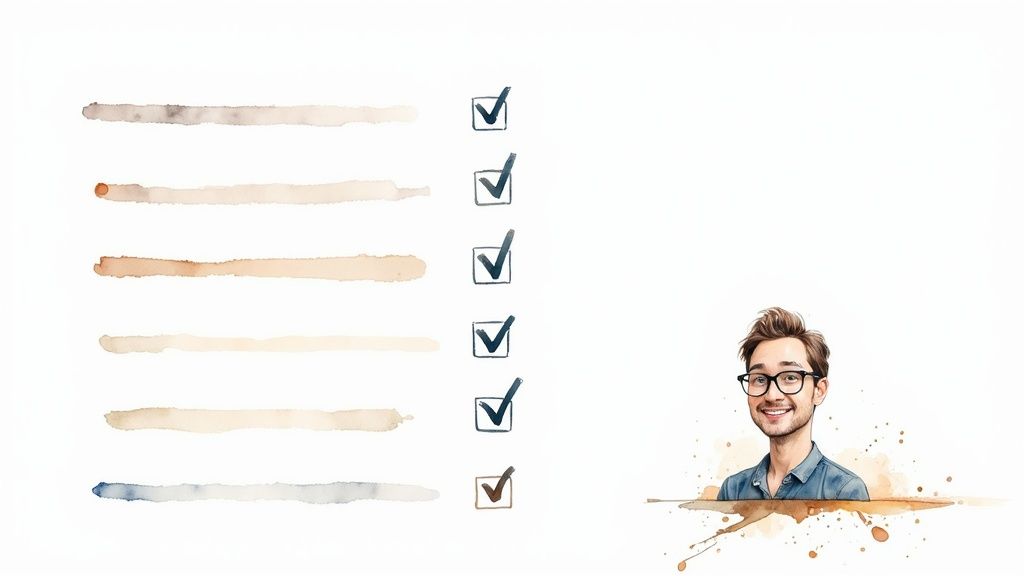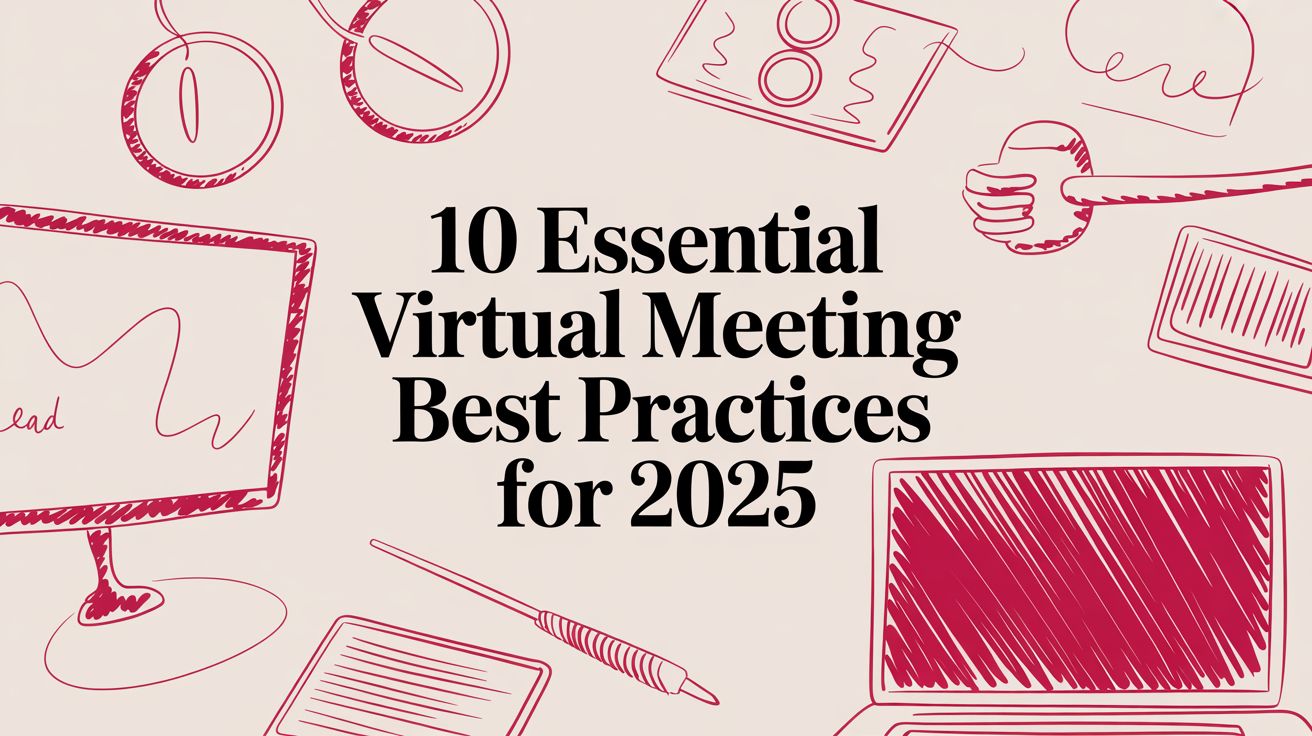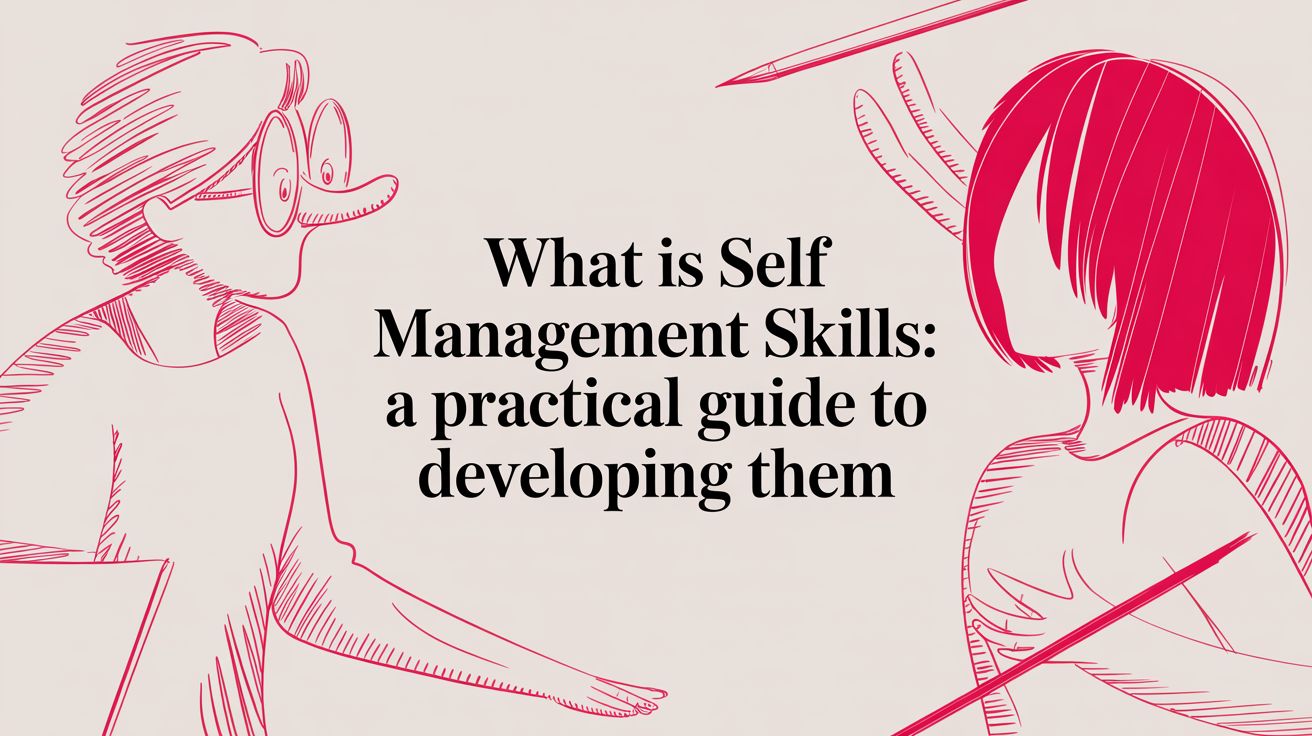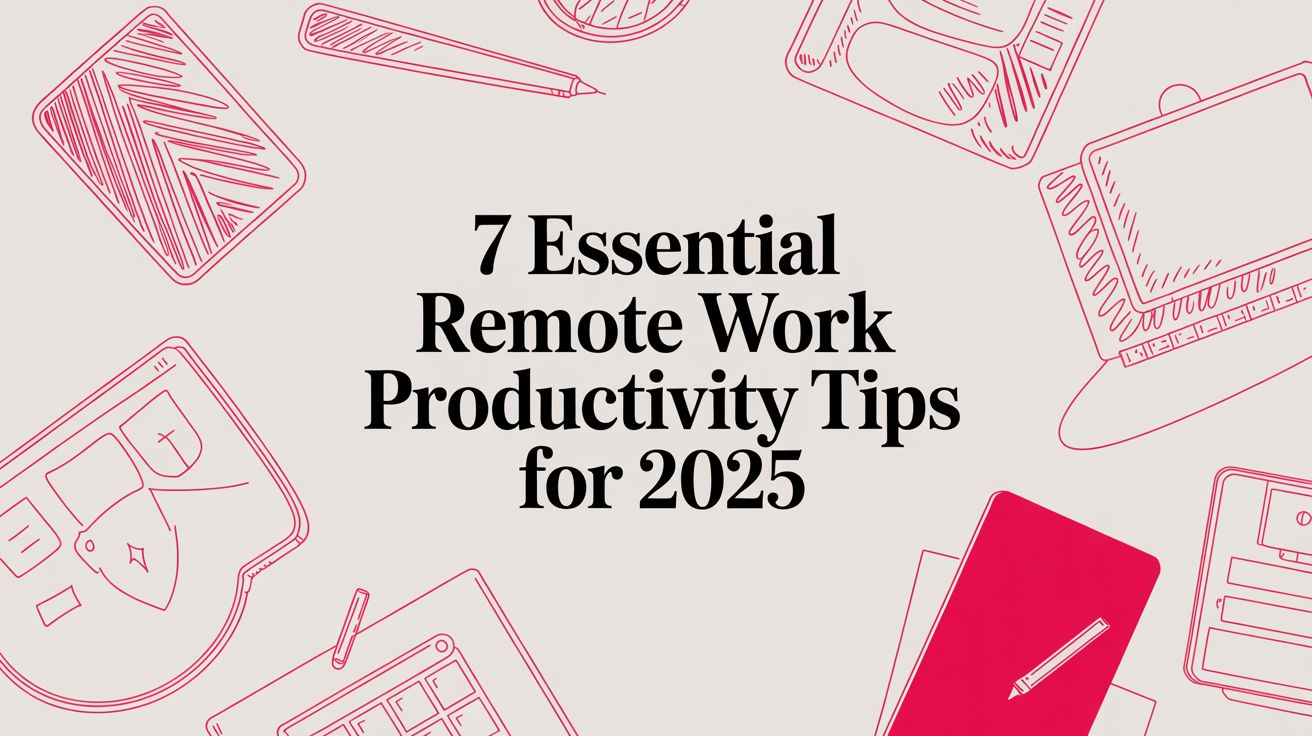What is Candidate Experience? Improve Hiring & Attract Top Talent
Max
So, what exactly is candidate experience? Think of it as the complete, gut-level feeling a job seeker gets about your company throughout the entire hiring process. It’s a journey that kicks off the second they stumble upon your job opening and doesn’t end until a final decision is made—and sometimes, not even then.
The easiest analogy? It’s customer service, but for your future employees.
What The Candidate Experience Really Means

Drilling down, the candidate experience isn’t just one single thing. It’s the sum of every feeling, action, and perception a person gathers while moving through your recruitment funnel. Every email, every interview, and yes, even the dead silence between communications—it all paints a picture of your company’s culture, values, and how you treat people.
A bad experience can do real, lasting damage. When candidates get stuck in a clunky application process, get ghosted after an interview, or deal with a disorganized hiring manager, they don’t just quietly move on. They talk. They share their frustrations with friends, on social media, and on review sites, which can seriously tarnish your employer brand and scare off great talent down the road.
The Impact on Hiring Decisions
Let’s be blunt: the way you treat candidates has a direct impact on whether your top choice says “yes.” A positive, respectful journey builds trust and gets people excited about the role. It can easily make your offer more appealing than a competitor’s, even if the salary is neck and neck.
The data backs this up. A remarkable 66% of job applicants who accepted an offer did so specifically because they had a great experience during the hiring process. On the flip side, 36% have turned down offers simply because of a negative interview experience.
What this tells us is that respect, clear communication, and a smooth process aren’t just “nice-to-haves.” They’re some of the most powerful tools you have for landing the people you really want.
Key Components of the Experience
To truly get a handle on the candidate experience, you have to break it down into its core parts. These are the touchpoints where your company’s reputation is either made or broken.
Let’s walk through the candidate journey to see where these critical interactions happen.
Mapping The Candidate Journey From Start To Finish
The candidate journey is a multi-stage process, and each step offers a chance to either impress or disappoint. Understanding these stages is the first step toward creating an experience that wins over top talent.
| Stage | Candidate Actions | Company Touchpoints |
|---|---|---|
| Awareness & Discovery | Learns about the company, searches job boards, reads reviews, explores the company website. | Job postings, career page, social media presence, employee testimonials, company blog. |
| Application | Finds a specific role, completes and submits the application form. | The application form itself (is it simple or complex?), confirmation emails, accessibility on mobile. |
| Screening & Assessment | Waits for a response, completes any initial skills tests or video screenings. | Automated rejection/update emails, communication from a recruiter, instructions for assessments. |
| Interview | Prepares for and participates in one or more interviews (phone, video, or in-person). | Scheduling process, pre-interview info, the interviewers themselves, quality of questions asked. |
| Offer or Rejection | Receives a job offer or a rejection notification, may negotiate terms. | The offer letter, phone call from the hiring manager, personalized rejection email. |
| Onboarding (for Hires) | Accepts the offer and begins the pre-employment process. | Welcome emails, paperwork, first-day instructions, team introductions. |
Each of these touchpoints is a “moment of truth” that shapes a candidate’s overall perception. A clunky application, a rude interviewer, or a ghosting recruiter can sour the entire experience, no matter how great the other stages were.
For a deeper dive into improving these stages, check out our complete guide on how to improve the candidate experience with practical, actionable strategies.
Why A Great Candidate Experience Drives Business Growth

It’s easy to think of the candidate experience as just an HR courtesy—a “nice-to-have” part of recruiting. But in reality, it’s a powerful business strategy with a clear and direct impact on your bottom line.
How you treat applicants shapes everything from your recruiting costs and brand reputation to even your product sales. When you make a respectful and efficient hiring process a priority, you’re not just filling a role; you’re building a serious competitive advantage.
A great experience creates a powerful ripple effect. Candidates who feel valued are more engaged, far more likely to accept an offer, and show up on day one ready to make an impact. That positive momentum translates directly into tangible business results you simply can’t afford to ignore.
Boosting Offer Acceptance And Reducing Costs
In a tight job market, a standout candidate experience can be the one thing that convinces top talent to join your team over a competitor’s. When someone has multiple offers on the table, the company that provided a smooth, communicative, and respectful journey often comes out on top. This directly improves your offer acceptance rate, one of the most vital metrics in recruiting.
This is especially true in crowded fields. Recruitment data from the 2025 Global Recruitment Report reveals that the U.S. has a surprisingly low offer acceptance rate of just 79%. That means nearly one out of every five candidates who gets an offer turns it down. A better experience helps you beat those odds.
A higher offer acceptance rate means your team spends less time and money re-opening searches for the same position. You shorten your time-to-hire and lower the overall cost-per-hire, freeing up resources for other strategic initiatives.
Strengthening Your Employer Brand And Building A Talent Pipeline
Your hiring process is one of the most public-facing parts of your company culture. Every single interaction—from the initial application to the final decision—is a branding opportunity. A positive experience reinforces your reputation as a great place to work, making it easier to attract amazing people for future openings.
On the flip side, a poor experience can do real damage.
- Negative Reviews: Unhappy candidates have platforms like Glassdoor to share their stories, and those reviews can scare off top talent before they even apply.
- Damaged Consumer Trust: It gets worse. Studies show that a staggering 50% of candidates say they wouldn’t buy products or services from a company after a bad application experience.
Even candidates you don’t hire can become powerful brand advocates. When you treat rejected applicants with dignity and offer timely, respectful feedback, they are more likely to reapply later or refer great people from their network. This approach, rooted in fairness, turns your hiring process into a long-term relationship-building machine. You can dive deeper into this idea in our guide to implementing fair hiring practices.
The Three Pillars Of A Winning Candidate Experience

A world-class candidate experience doesn’t just happen. It’s not about random acts of kindness or the occasional friendly email. It’s a deliberate strategy, a repeatable process built on a solid foundation. If you want to create a system that consistently wows top talent, you need to master three core pillars: communication, transparency, and technology.
Think of these pillars as the legs of a stool. If one is shaky or missing altogether, the entire experience becomes wobbly and unreliable. Mastering all three is what separates a decent hiring process from a truly great one that people talk about for all the right reasons.
These elements work hand-in-hand to build trust, set clear expectations, and smooth out the rough patches that cause so many great candidates to walk away. Let’s break down how each one contributes to a winning strategy.
Pillar 1: Communication That Builds Trust
In recruiting, silence is a deal-breaker. Consistent, empathetic communication is the most critical pillar because it solves the single biggest frustration for job seekers: being left in the dark. A staggering 76% of applicants say that not hearing back after they apply is a major source of frustration.
Good communication isn’t about spamming candidates with automated updates. It’s about making them feel seen, valued, and respected as individuals. Even a simple, personalized note that confirms you got their application and lays out the next steps can make a world of difference.
To get communication right, focus on a few key actions:
- Acknowledge Every Single Application: An immediate confirmation tells the candidate their application didn’t just vanish into a “black hole.” It’s the first step in building trust.
- Keep Them in the Loop: Don’t wait until you have perfect news. If there’s a delay, just say so. A quick note like, “We’re still reviewing candidates and will have an update for you next week,” is infinitely better than silence.
- Humanize Rejections: When you can, offer a bit of brief, constructive feedback to candidates you’ve interviewed but aren’t moving forward with. It shows respect, helps them on their journey, and leaves them with a positive impression of your company.
Pillar 2: Transparency That Sets Clear Expectations
The second pillar, transparency, is all about being upfront and honest. Candidates want—and deserve—to know what they’re getting into. This includes everything from the day-to-day job responsibilities and company culture to the interview process itself. When expectations don’t line up with reality, you’re just setting everyone up for disappointment.
Being transparent means giving people a clear roadmap for the hiring journey. Tell them how many interview rounds to expect, who they’ll be speaking with, and what the general timeline for a decision looks like. This simple act of setting expectations removes a ton of anxiety and empowers them to put their best foot forward.
A lack of clarity is a huge red flag for job seekers. When you provide honest information about the role, salary range, and process, you build a foundation of trust that can make your offer far more attractive than a competitor’s.
Pillar 3: Technology That Removes Friction
Finally, the right technology acts as the backbone supporting both communication and transparency. Nothing turns a candidate off faster than a clunky, confusing, or mobile-unfriendly application process. In fact, research shows that 60% of job seekers have bailed on an application simply because it was too long or complicated.
Your Applicant Tracking System (ATS) and career page should feel seamless and intuitive. The goal is to make it as easy as possible for a great candidate to show their interest. You should be using tech to reduce effort, not create more of it.
Modern tools can automate follow-ups, schedule interviews without endless back-and-forth emails, and provide a single place for all communication. This ensures no one falls through the cracks. By choosing technology that enhances the human experience, you create a process that feels modern, respectful, and completely effortless for the people you want to hire.
How To Map And Improve Your Candidate Journey

Okay, let’s move from theory to action. To really understand what your candidates are going through, you have to walk a mile in their shoes. The single best way to do this is with candidate journey mapping—a method for visualizing every single interaction from the applicant’s point of view.
This isn’t just an academic exercise. It helps you spot the hidden friction points, the awkward silences, and the moments of confusion you’d otherwise never see. Before you can fix the journey, you have to understand it. A great starting point is learning how to create a process map, which will help you lay out each stage from that first job ad to the final offer.
This is all about gathering real, honest feedback, not just guessing what people feel. By getting their direct perspective, you can pinpoint exactly where your process shines and, more importantly, where it’s falling flat.
Gathering Actionable Feedback
To build an accurate map, you need data—real feedback is the raw material for improving your process. Don’t rely on your gut feelings. Instead, use a mix of methods to get a clear picture of what’s actually happening.
- Candidate Surveys: Send out short, focused surveys at key moments, like right after someone applies or following the final interview. Ask about clarity, timeliness, and how they felt overall.
- Analyze Online Reviews: Keep a close eye on feedback from sites like Glassdoor. Recurring complaints are a huge red flag, often pointing to a bigger, systemic issue in your hiring process.
- Post-Interview Debriefs: For candidates who got to the later stages (even the ones you turned down), a quick, informal chat can provide incredibly valuable, detailed insights into their experience.
Remember, every piece of feedback is a gift. Even negative comments give you a clear roadmap for what needs fixing, turning a potentially bad experience into a real opportunity for growth.
Turning Insights Into An Action Plan
Once you’ve collected all that feedback, it’s time to turn it into a concrete action plan. This means prioritizing the biggest problems and assigning someone to own the solution so changes actually get made. If your surveys reveal the application is way too long, the action is simple: shorten it.
It’s amazing how often there’s a gap between the tech a company has and how they use it. A revealing benchmark report found that 88% of Fortune 500 companies failed to suggest other relevant jobs based on a candidate’s skills—a massive missed opportunity. Yet, the same report showed that 82% offered a mobile-friendly application that took three steps or less, so they clearly understand the need for user-friendly design.
Your action plan has to be specific. If interviewers are all over the place, the fix is standardized training. If your response times are painfully slow, the solution could be setting new communication deadlines for your recruiting team. This process doesn’t just stop at the hire, either. A great candidate experience should flow seamlessly into their first day. To nail that handover, take a look at our comprehensive remote employee onboarding checklist.
Learning From Companies With A Great Candidate Experience
Theory is great, but seeing excellence in action gives you a real-world blueprint for how to improve. The best companies don’t just sidestep common mistakes; they go out of their way to create memorable, positive moments that make top candidates genuinely want to join their team.
These organizations treat their hiring process as a competitive advantage. Moving well beyond basic courtesy, they pick apart every single touchpoint to find opportunities to delight and impress. They get that a candidate’s journey is a direct reflection of their company culture. Let’s look at a few specific, innovative strategies that really set the bar.
Going Beyond The Automated Email
One standout tactic is using personalized video messages. Instead of a bland, automated confirmation email, imagine a recruiter sending a short, personal video. “Hi Alex, I just reviewed your application for the Senior Product Manager role and was really impressed with your portfolio. I’ll be in touch within 48 hours to schedule a chat.” It’s a small effort, but it instantly builds a human connection.
Another powerful move is giving detailed, constructive feedback to every single candidate who finishes an interview. Most companies avoid this, but the ones that do it well build an incredible amount of goodwill. They show genuine respect for the candidate’s time and effort, turning even a rejection into a positive brand moment.
A candidate who gets helpful feedback is far more likely to reapply for a future role or refer others from their network, even if they weren’t the right fit this time. It transforms a one-time transaction into a long-term relationship.
Mastering The Seamless Application
The best companies have also nailed the seamless, one-click application. By integrating with platforms like LinkedIn, they let candidates apply with a single click. This completely removes the soul-crushing process of re-entering an entire work history from scratch. It’s a simple, tech-forward approach that respects a candidate’s time and removes a huge point of friction that causes 60% of job seekers to abandon applications.
These strategies are absolutely critical when you’re trying to land specialized talent. For instance, our guide on hiring remote software developers points out how a streamlined and respectful process is non-negotiable for attracting top engineers who are flooded with offers.
Ultimately, these examples prove that a great candidate experience isn’t about grand, expensive gestures. It’s about a consistent commitment to communication, respect, and making the entire process as human and frictionless as possible.
The Future Of Hiring And The Candidate Experience
The hiring game is changing fast, and technology is right at the center of it all, shaping what is candidate experience. Looking down the road, it’s clear that Artificial Intelligence (AI) and automation are going to completely rethink how companies connect with talent.
Imagine a job search that doesn’t feel like a chore. Instead of endlessly scrolling through job boards, an AI-powered system could serve up personalized job recommendations that actually fit your skills and what you’re looking for next in your career. It turns the hunt into a guided, more intuitive journey.
On top of that, AI-driven chatbots can be on standby 24⁄7 to answer common questions about a job or the company. This instantly takes a huge administrative load off recruiters, freeing them up to do what humans do best: build real relationships, have meaningful conversations, and sell the company’s vision to the best candidates.
Balancing Automation With Human Connection
But here’s the catch: while all this tech is powerful, it’s easy to go too far. An overly automated, robotic process can leave candidates feeling like they’re just another number in a spreadsheet—unseen and unimportant. The real secret to success will be finding that perfect balance.
The goal of technology should be to enhance the human touch, not replace it. Automation should handle the logistics so recruiters can focus on creating memorable, personal interactions that build real connections and trust.
Think about it this way: an automated system can handle the back-and-forth of scheduling an interview, no problem. But a short, personalized video message from the hiring manager saying, “We’re excited to talk to you,” can make a candidate feel genuinely valued. This people-first mindset is a cornerstone of a healthy company culture.
How a company blends technology and people says a lot about its identity. You can dive deeper into this in our guide to building a great remote work culture.
Ultimately, the future of the candidate experience is about using technology with intention. It should be a tool that empowers recruiters to be more strategic and empathetic, creating a hiring process that’s both efficient and profoundly human.
Of course. Here is the rewritten section, following all the specified requirements for a human-like, expert tone and style.
Common Questions About Candidate Experience
As you start dialing in your hiring process, some practical questions always pop up. Getting these answers right is the difference between just talking about a better candidate experience and actually building one that makes a real impact.
Let’s start with a big one: “Do we really need to respond to every single applicant?” The answer is a hard yes. A staggering 76% of job seekers say their biggest frustration is never hearing back after applying. An automated confirmation email is the absolute bare minimum. It’s a simple nod that acknowledges their time and sets a baseline of respect.
Another question that comes up is about the return on investment. “Is all this effort actually worth the cost?” The data doesn’t lie: 63% of job seekers would flat-out reject an offer if the experience was a bad one. Investing in a smooth, respectful process directly improves your offer acceptance rate, which means less time and money wasted re-opening a search for the same role. Think of it as a direct investment in your hiring efficiency.
How Much Communication Is Too Much?
Finding that “just right” amount of communication is a common worry for recruiters. The secret isn’t about the quantity of messages, but the quality. Candidates don’t need a daily play-by-play, but they do need to know where they stand.
A simple, effective timeline looks something like this:
- Immediate confirmation: An automated email hits their inbox the second they apply.
- Weekly updates: If things are taking longer than expected, a quick note to let them know they haven’t been forgotten.
- Post-interview follow-up: A clear timeline for what happens next, sent within 24 hours of the interview.
In the end, a great candidate experience isn’t about grand, over-the-top gestures. It’s built on consistent, predictable communication that makes people feel seen, not like they’ve shouted into a void. Making that simple shift can completely change your hiring outcomes. In fact, just providing honest feedback can slash candidate resentment by 29%.
Ready to attract top remote talent with a standout hiring process? Remote First Jobs connects you with over 40,000 skilled professionals actively seeking their next role. Post your job today and reach a dedicated audience looking for authentic, remote-first opportunities. Start hiring now


